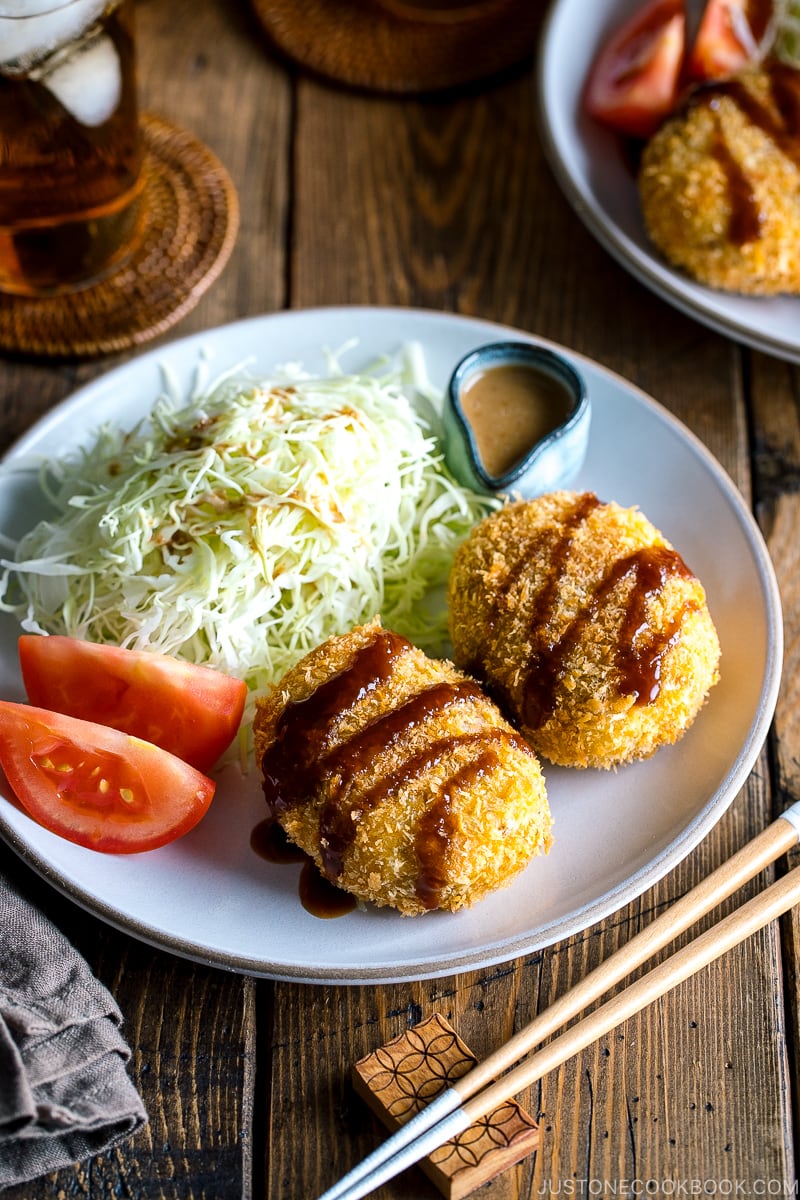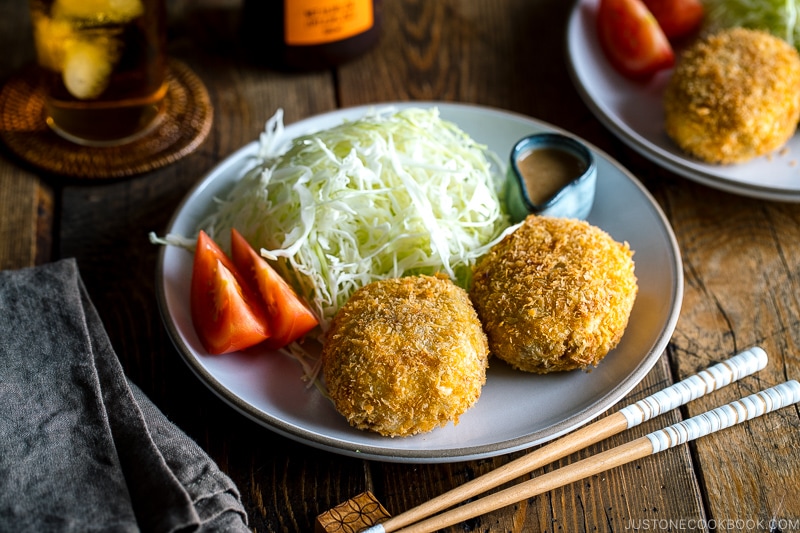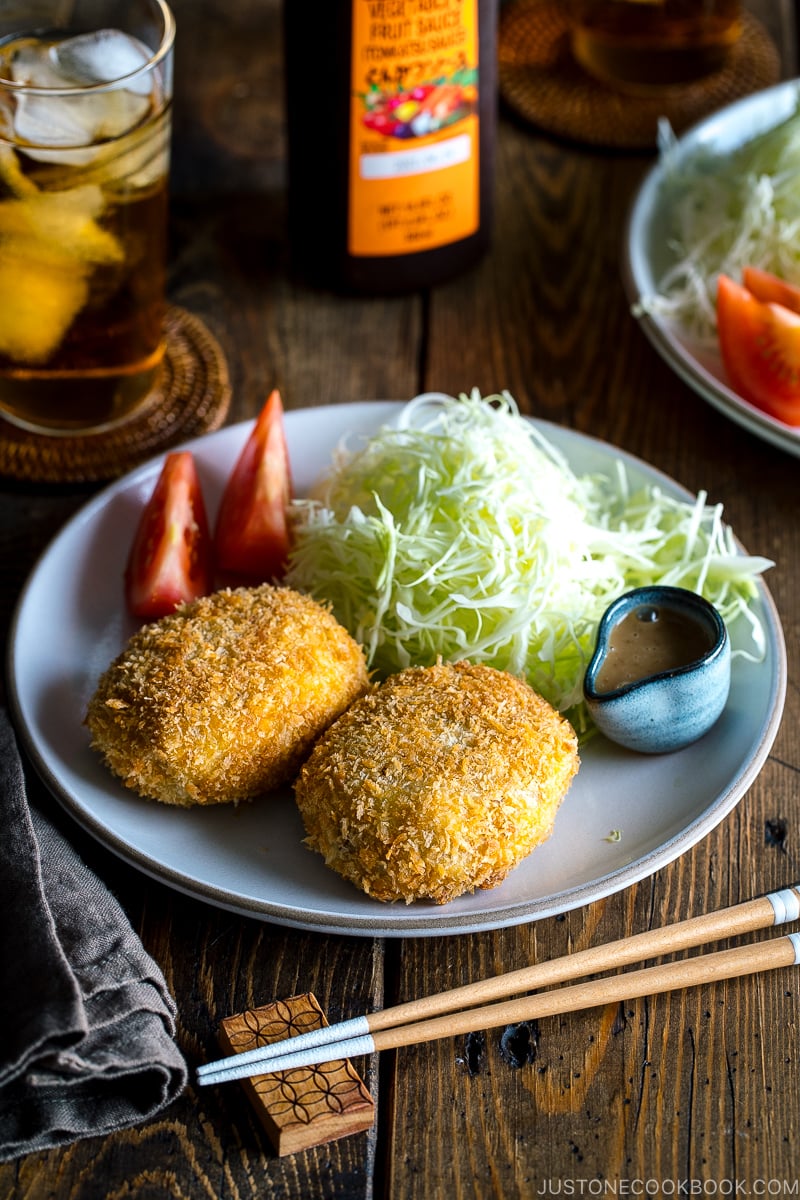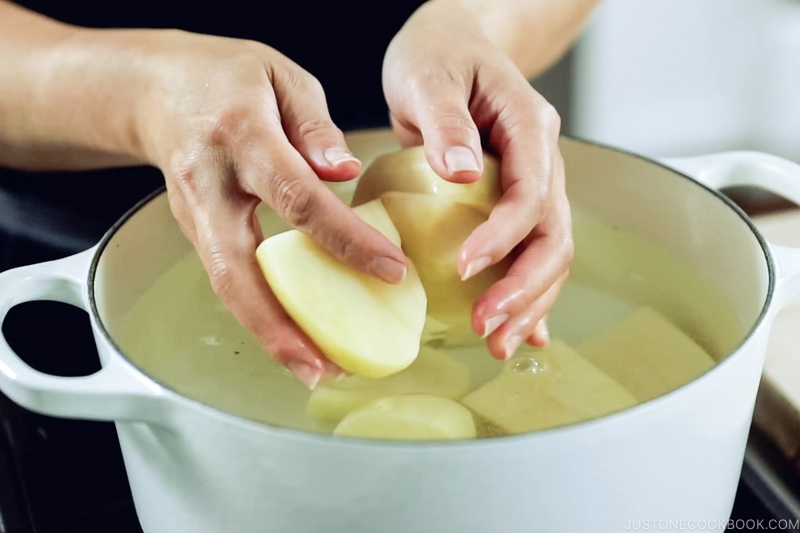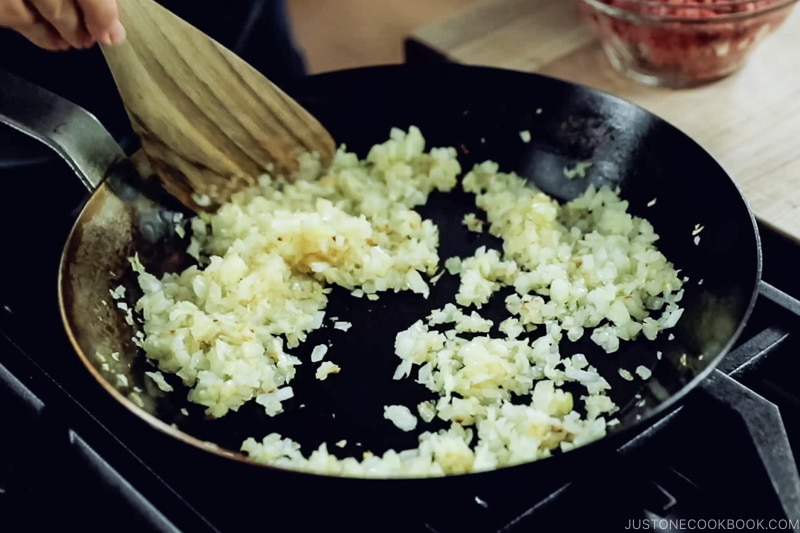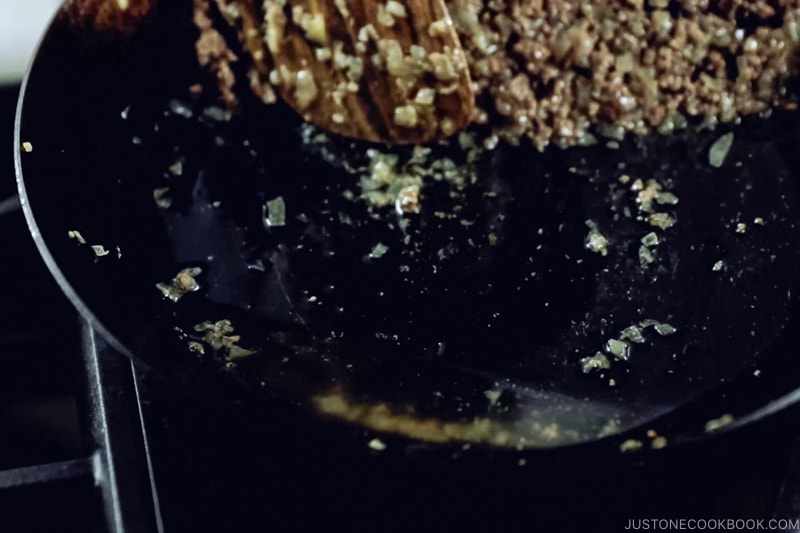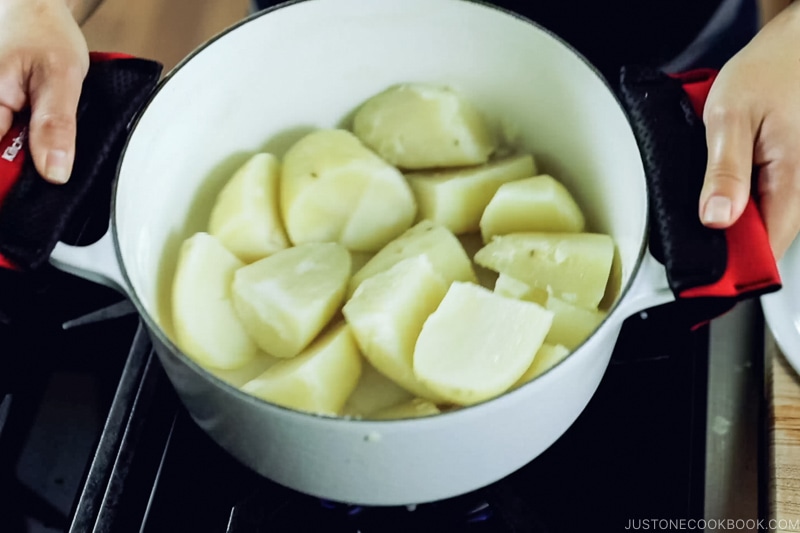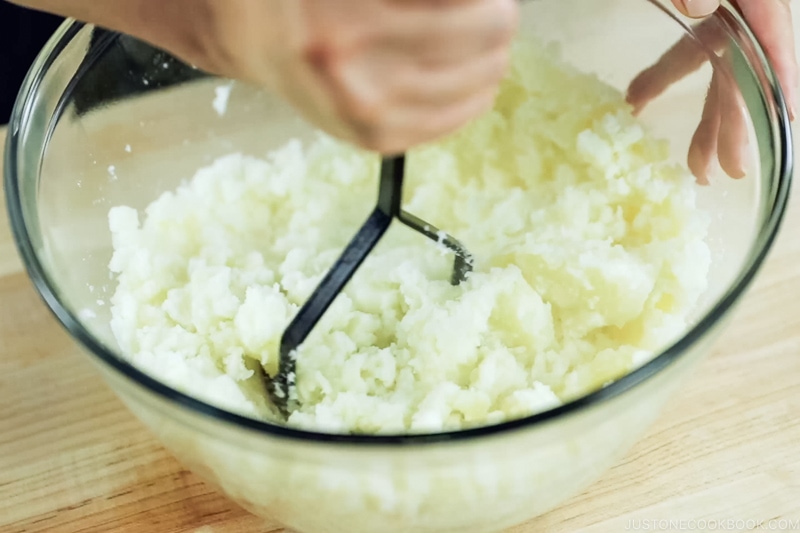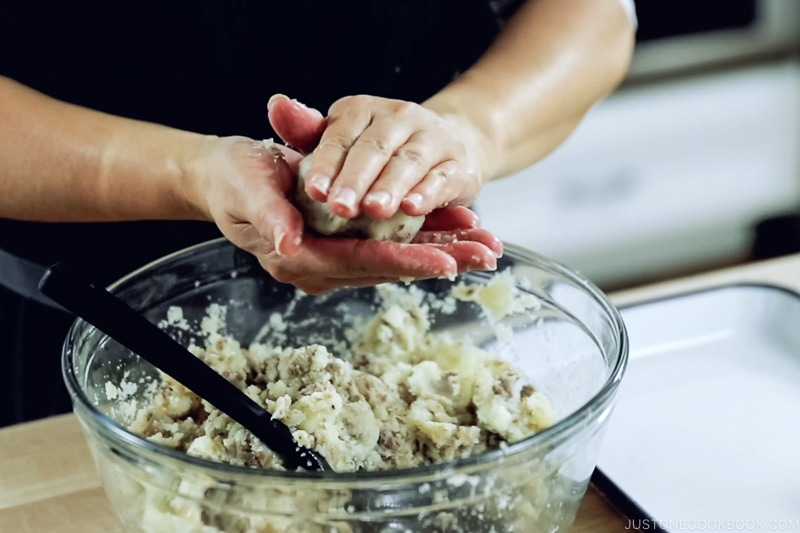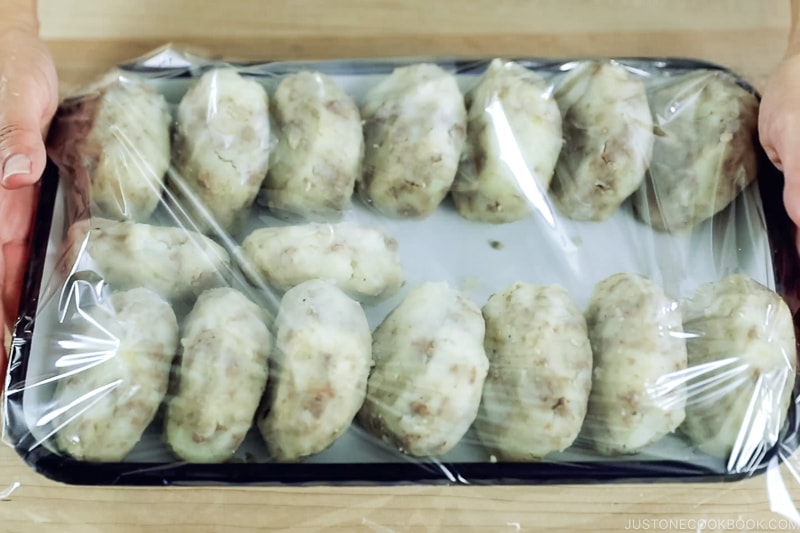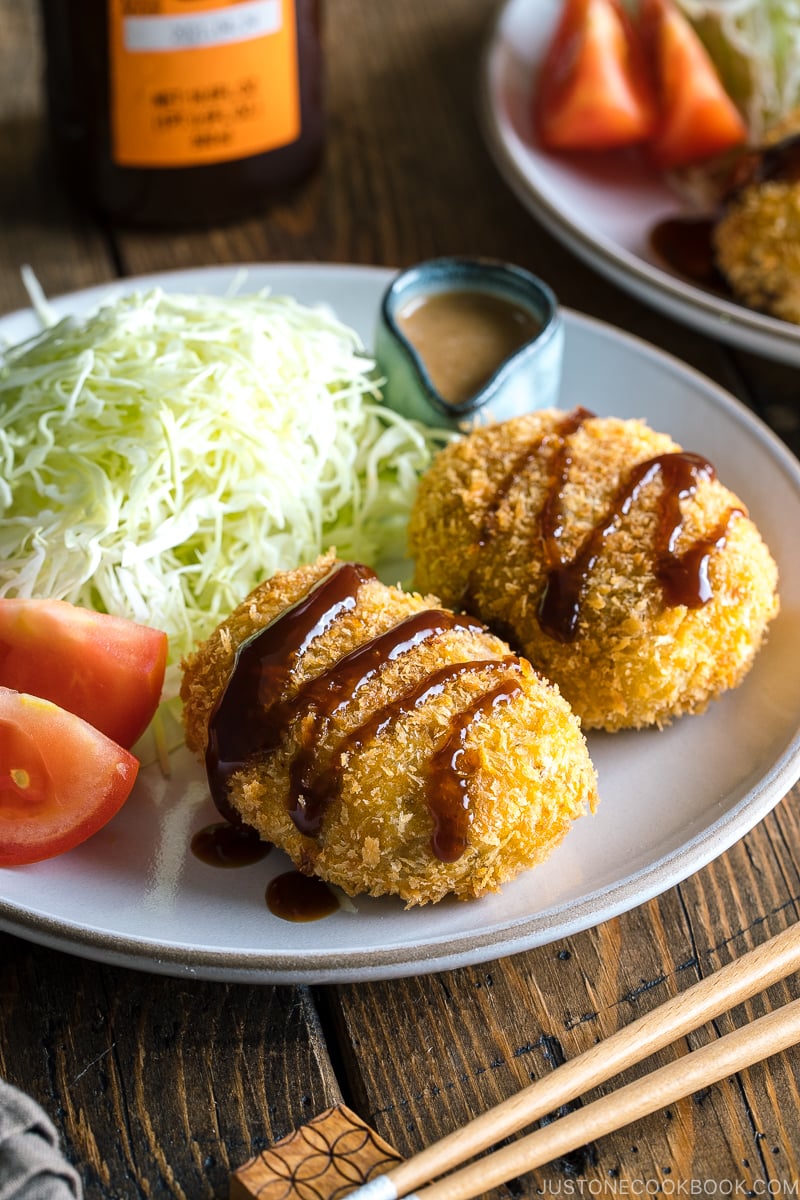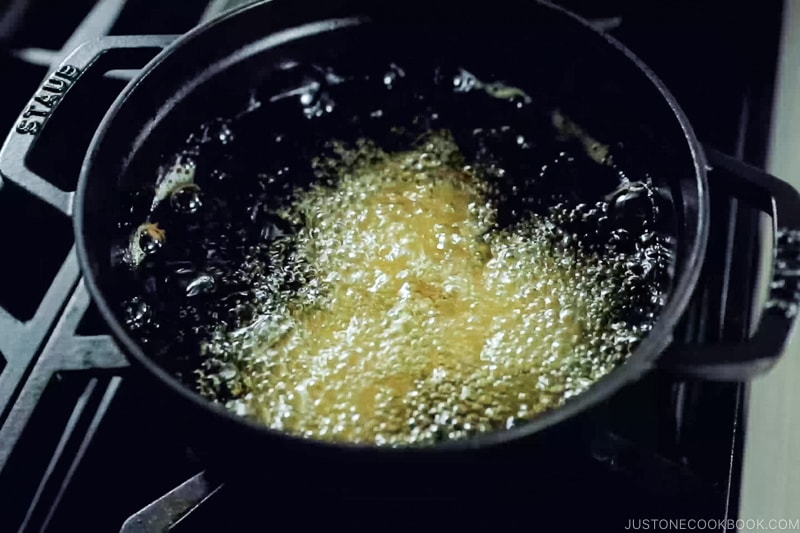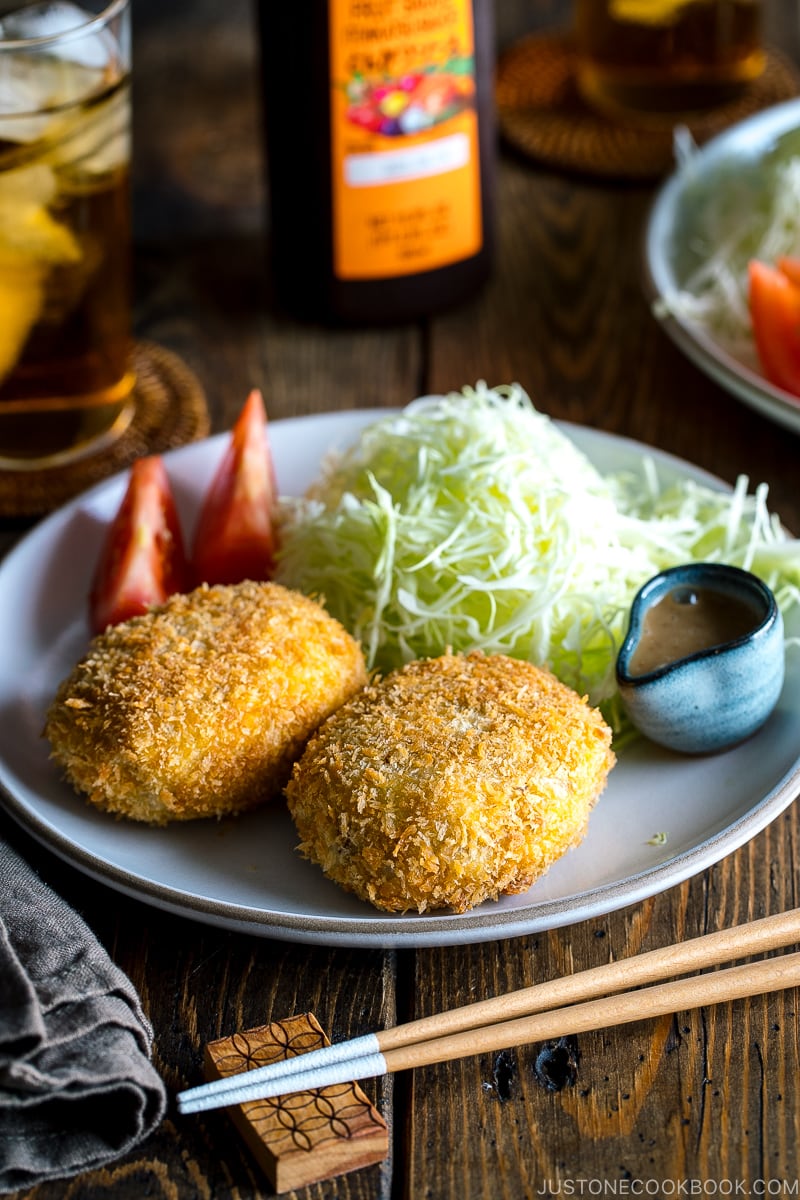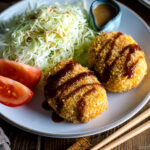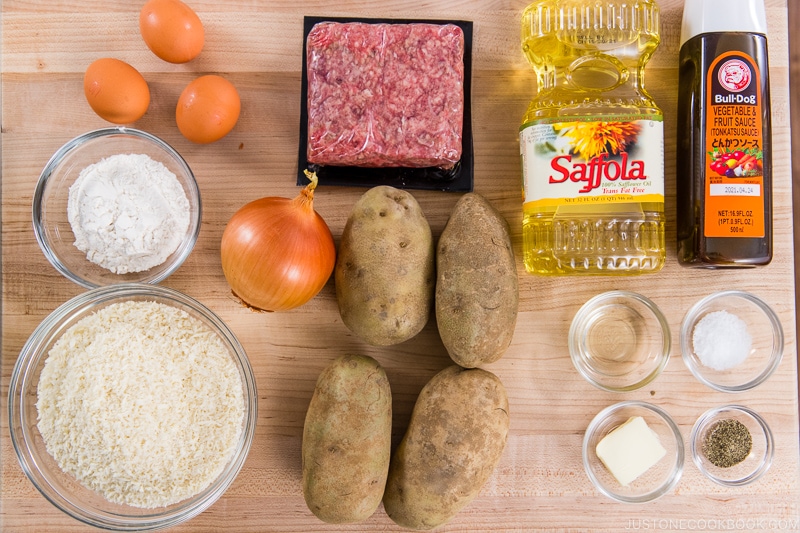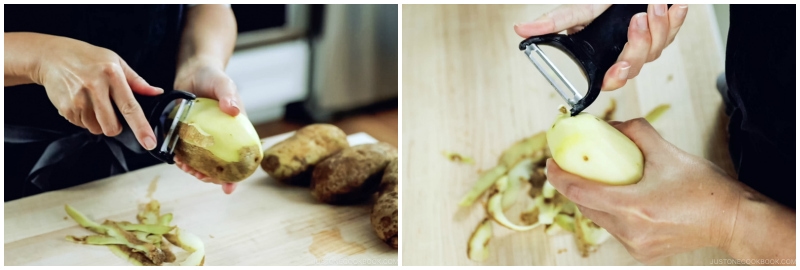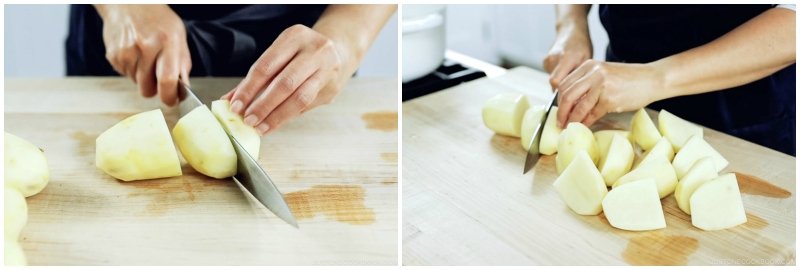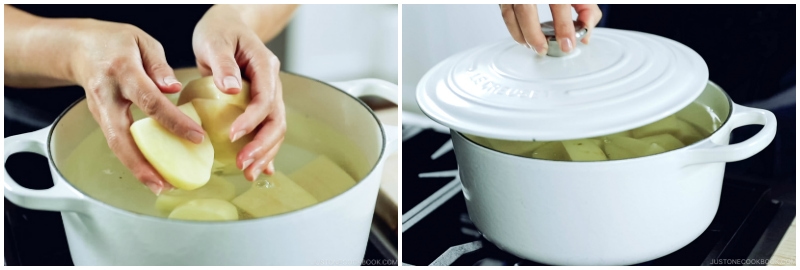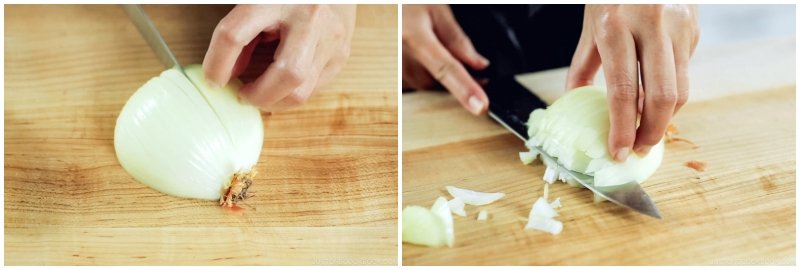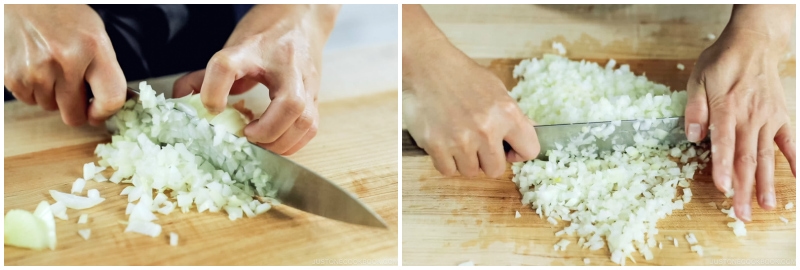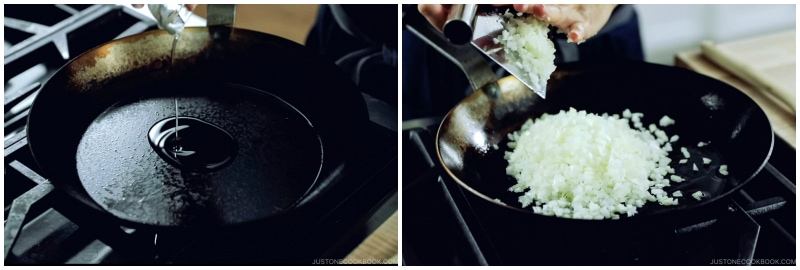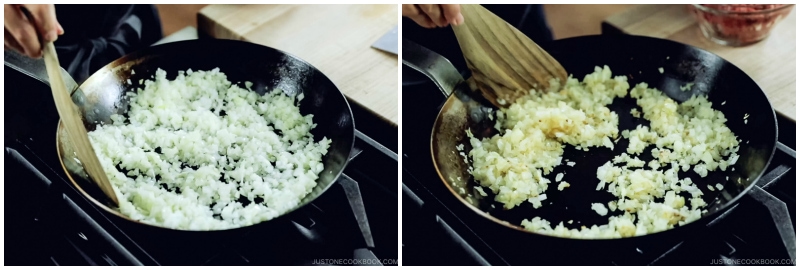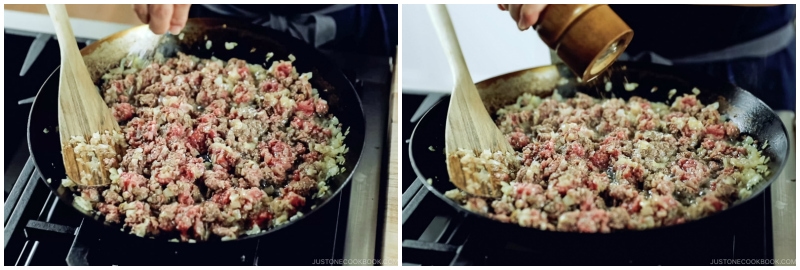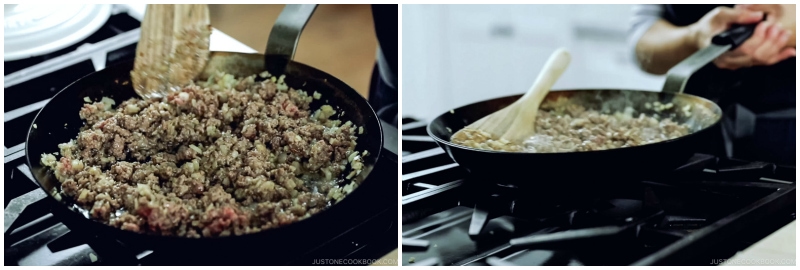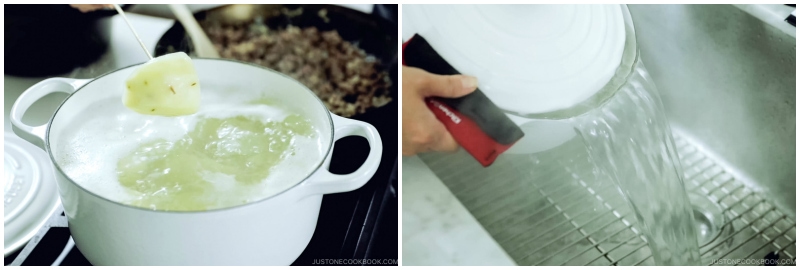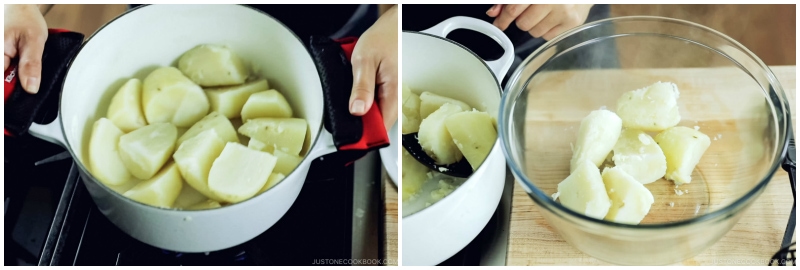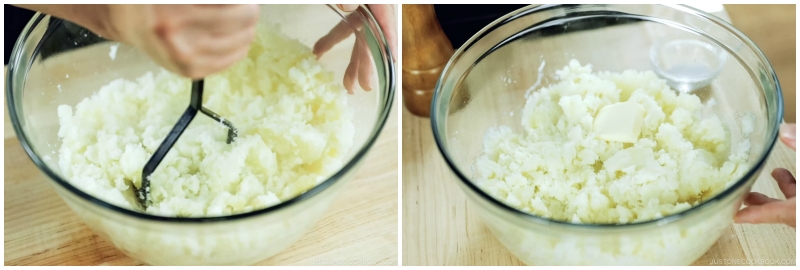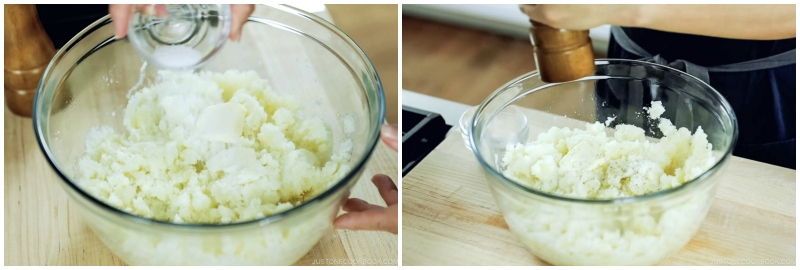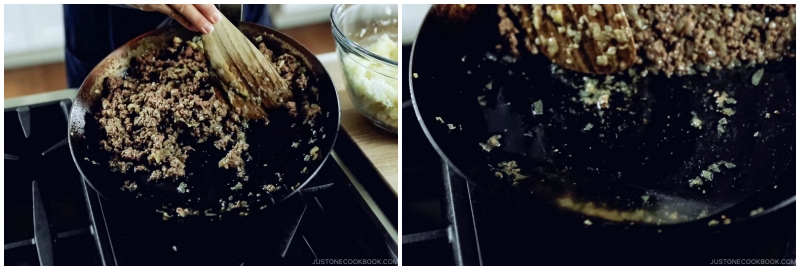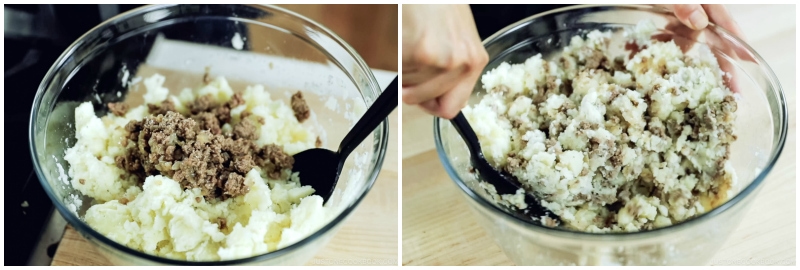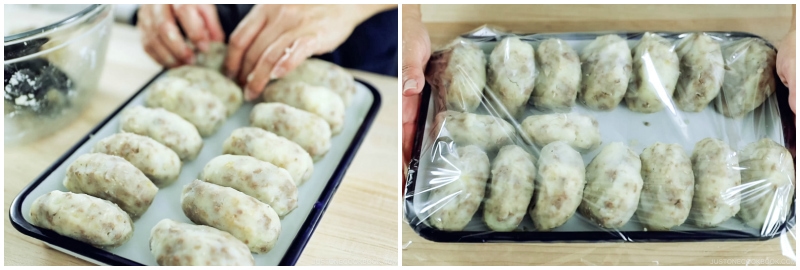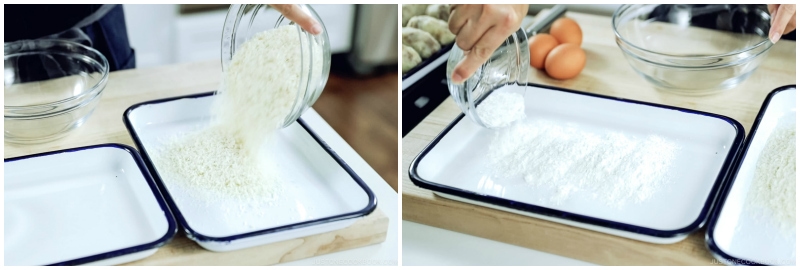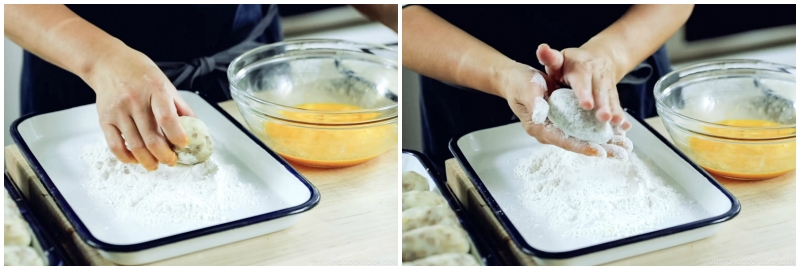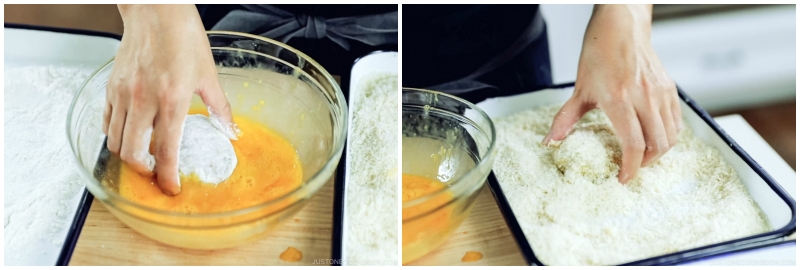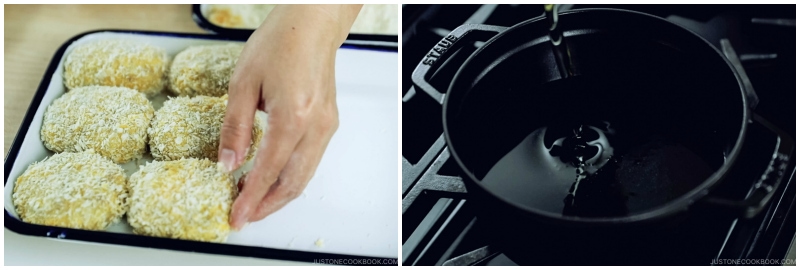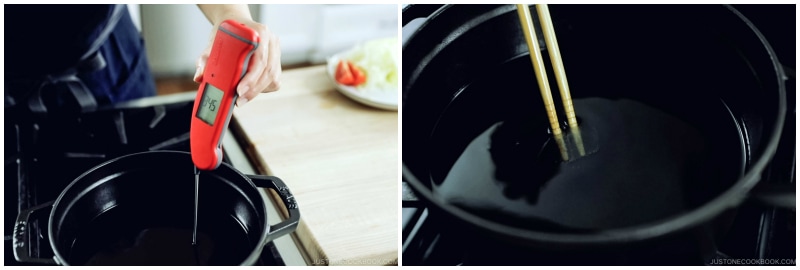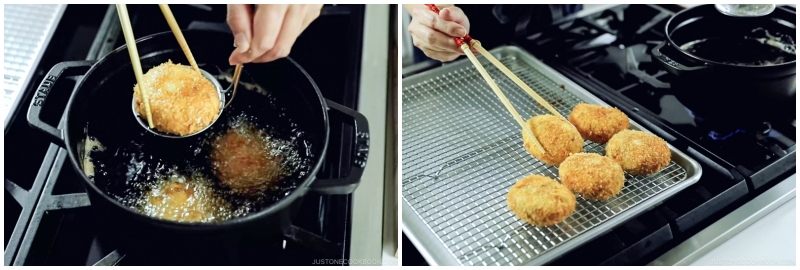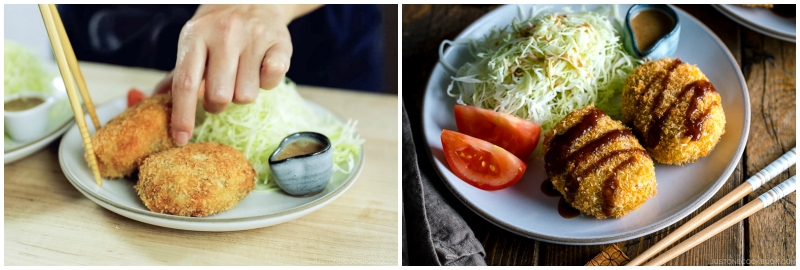If there was one food that I must have when I visit my parents back in Japan, it would be Japanese Croquettes or Korokke (コロッケ). Not any kind of korokke but the ones that my mother makes. I could never resist the crispy panko exterior that breaks away into a luscious potato and meat mixture. It is the most delicious and comforting reminder of home! Today I’m going to share my mother’s recipe. She often tweaks her korokke as a way to explore new flavors, such as one time she added miso for an extra boost. You too can do the same! Feel free to add a dash of curry powder, incorporate carrot and shiitake mushrooms (see this recipe), or swap the potato and meat with kabocha (see this recipe).
What are Japanese Croquettes?
Japanese croquettes are called Korokke (コロッケ) and the classic style is made of mashed potatoes mixed with sauteed ground beef and onion. The flat oval-shaped patties are breaded with light and airy panko breadcrumbs and deep-fried till golden brown and crispy. Korokke was introduced in Japan around the late 1800s as a potato filling instead of the traditional French creamy croquettes due to the lack of dairy in Japan. These Japanese potato croquettes became one of the top 3 popular Yoshoku (western-influenced dishes) in the early 1900s (Taisho period) along with beef steak and Tonkatsu. In Japan, Korokke is a homemade food as well as a street food. You can buy fried korokke to take home at butcher shops, order it at diners and restaurants, and buy it in pre-cooked food (Sozai) and bento section at supermarkets and convenience stores. Having tasted my mom’s homemade korokke, I just couldn’t bring myself to eat the ones from the stores or restaurants because they are made of mostly potatoes and the taste is rather bland. That’s why you have to make them yourself at home!
Why You’ll Love This Korokke
More meat for extra flavor – My mother’s recipe includes more meat than most recipes or store-bought. Never too plain. Crunchy shell on the outside, and slightly chunky, starchy texture on the inside. Great for making ahead (meal prep) and easy to reheat! Perfect for packing in bento (make mini sizes!) Another delicious panko-breaded dish you can eat with your favorite Tonkatsu sauce.
4 Key Ingredients to Make Korokke
It’s important to get the right quality ingredients, especially for a simple recipe like this. Please read below carefully.
1. Russet Potatoes
In the US, the most common potatoes are Russet potatoes, red potatoes, and Yukon Gold potatoes. For making Korokke, the Russet potatoes are the ideal choice since the starchy, fluffy, and light texture makes for the perfect bite. They are the best at soaking up the juice and flavor from the meat and onion. If you’re in Japan, there are “May Queen” (メークイン) and “Danshaku” (男爵) potatoes. For Korokke, use Danshaku or do as my mom who uses roughly 85-90% Danshaku and adds 10-15% May Queen because she likes to be different… She also believes she should boil potatoes with the skin on, and then peel it with fingers while they are hot. Because it could possibly burn fingers, I excuse myself for not following her method 100%.
2. High-Quality Ground Beef
Typically, Japanese croquettes use ground beef but sometimes can use ground pork. I usually use high-quality 85% lean ground beef for more flavor. The korokke sold from the butcher shops are delicious, and you know the reason – high-quality meat! You can use ground turkey or chicken, but I think the flavor could be a little lacking compared to beef. For those who want to make a vegan/vegetarian version, you can omit the meat completely. Instead, switch it with finely chopped shiitake mushrooms or other mushrooms you have. You can also add dense vegetables such as corn and carrot, which do not have much moisture, but you can also sauté them until the moisture is evaporated.
3. Yellow Onion
I use yellow onions whenever I caramelize or stir fry till golden. The amount of flavor and sweetness you’ll get from cooking those yellow onions, as opposed to other kinds, is significantly higher. The key is to stir-fry until the moisture evaporates so the croquettes do not contain extra moisture. For a nice char, leave the chopped onion for a long stretch of time between stirring.
4. Panko (Japanese breadcrumbs)
Try finding Japanese brand breadcrumbs called Panko. The light, airy, larger flakes tend to stay crispier longer than standard breadcrumbs because they don’t absorb as much grease. See the brand I normally use in this post.
5 Important Tips for Making Korokke Patties
Read these tips carefully before you start cooking!
1. Start boiling the potatoes from cold water.
I learned to boil root vegetables from cold water as a method to protect the shapes and textures. That means you add the potatoes and water in the pot at the same time, as opposed to adding them later to the boiling water. Due to the density of potatoes or any root vegetables for this matter, it takes a long time for the heat to reach the center. Therefore it’s best to start cooking them from water to prevent the skin or outer layer from disintegrating before the inside is cooked.
2. Moisture is a big no-no!
During the cooking process, it’s important to remember not to introduce moisture to the patties. There are 3 cooking steps in this recipe where you should remove excess moisture.
3. Mash and season the potatoes while hot.
While the potatoes are hot, mash and let the steam escape. My mom usually keeps some potato chunks unmashed to create texture. Season the potatoes and add the meat mixture while the potatoes are hot so that they will absorb all the flavor. Do not knead the mixture (you don’t want it mushy!); gently combine well together.
4. Do not include the air.
When you’re shaping the potato and meat mixture into an oval patty shape, try not to include air pockets.
5. Let the patties cool completely before breading.
This step is very important. Resting and cooling down the patties prevents the korokke from exploding while deep frying. The cold patties in the hot oil will not release any steam; therefore korokke will not explode in the oil. It also helps the ingredients to meld together.
Helpful Tips for Deep Frying
The best part of deep frying Korokke, besides how delicious it is, is that the inside gets cooked fully. You do not need to worry about undercooking. This is why I believe Korokke is one of the easiest foods to practice deep frying. Here are my tips for deep frying Korokke.
Add enough oil to cover the croquettes completely. Use a cooking thermometer to check the oil temperature (no guessing!). Once you are used to it, you can use the chopstick or panko tricks to determine the oil temperature. Deep fry 2-3 pieces at a time. When you put too many pieces, the oil temperature will drop too quickly and the Korokke will absorb too much oil. Once you add the Korokke in the oil, don’t touch until it turns golden brown on one side.
How to Bake Korokke instead of Deep-Frying
I knew you would ask if you can bake instead of deep-frying! I got you covered. I do have a recipe for Baked Croquette! Wish to learn more about Japanese cooking? Sign up for our free newsletter to receive cooking tips & recipe updates! And stay in touch with me on Facebook, Pinterest, YouTube, and Instagram. Editor’s Note: This post was originally published on March 26, 2012. The post has been updated with a video, new images, and content in July 2020.
